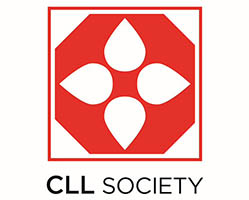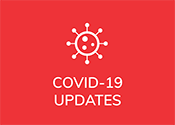Authored by Brian Koffman, MDCM (retired), MSEd
Bottom Line:
CAR-T is an effective but underused option in cancer, including CLL / SLL. Successful engineering of CAR-T cells in vivo in nonhuman primates has now been achieved.
Who Performed the Research and Where Was it Presented:
Maura H. Parker, PhD, and other researchers, mostly from Umoja Biopharma, the manufacturer of the experimental therapy, presented their preclinical animal results at the American Society for Hematology (ASH) Annual Meeting 2024 as both a poster and oral presentation.
Background:
The use of the patient’s own T lymphocytes (T-cells for short) that have been genetically reengineered to recognize and kill blood cancer cells offers a lifesaving “living drug” for many who had run out of treatment options. However, it is a difficult, bespoke, expensive, and lengthy procedure that doesn’t always produce the needed CAR-T cells. CAR-T stands for chimeric (two animals in one, in this case, human and mouse) antigen (cell surfaces protein markers such as CD19 or CD20 in CLL / SLL or chronic lymphocytic leukemia / small lymphocytic lymphoma) receptors T cells.
It is the most expensive billing code in Medicare, paying more to the hospitals performing the procedure than a heart transplant. This is largely because of the cost of manufacturing the cells ex-vivo (out of the body) at a specialized facility from T cells harvested from the patient. Using the patient’s own body (in vivo) as the manufacturer could dramatically simplify and reduce the cost of CAR-T production.
Methods and Participants:
Genetically engineered viral particles (Vivovec) for specific use in healthy macaque monkeys with a “payload” directed at CD20, a surface marker found on all B lymphocytes, including CLL / SLL cells, were administered either by an IV infusion or injected directly into lymph nodes where there are many T cells in five macaques at different doses. The viral particles were programmed to only enter the monkeys’ T cells, not reproduce, but live long enough to rewire those cells to attack B cells. The monkeys did not have CLL / SLL. Efficacy was measured by checking if all the B cells would be wiped out (B cell aplasia) by the therapy.
Results:
- Vivovec was well-tolerated in all animals following delivery via both routes of administration with no evidence of toxicity.
- However, mild CRS, or cytokine release syndrome (a potentially severe immune reaction seen with CAR-T and other immunotherapies in which the body releases a large number of cytokines or inflammatory chemicals too quickly into the blood), was observed, suggesting that the CAR-T actively kills B cells.
- CD20 CAR-T cells were detected in peripheral blood with significant expansion.
- All the B cells were indeed wiped out in the peripheral blood, starting on day six or seven, and were still gone when checked four weeks later at the end of the study.
Conclusions:
Monkeys aren’t people; these monkeys didn’t have CLL / SLL, but these results are still impressive.
The healthy immunocompetent animals had no obvious problems with the injection of viral particles. They had symptoms, and their lab results consisted of CRS. All their B cells disappeared. There was no evidence that the virus had entered any other cells than T cells. This all happened without conditioning chemotherapy.
The next step will be in human trials that may happen as early as 2025.
Less one thinks this is some wild fantasy of one company, at the Alliance for Cancer Gene Therapy (ACGT) Summit in March 2025, it was stated that some 20 companies are pursuing in-vivo CAR-T, and the consensus of experts in the room, though there was some strong disagreement, is that this part of the future of cellular therapy.
This therapy is years away from being routinely administered in a doctor’s office near you, but human trials will soon open. CAR-T therapy itself was dismissed as a pipedream only 20 years ago.
In a separate article and video, we will discuss how this approach, if successful, could democratize and radically change the access issues that plague CAR-T.
Links and Resources:
Read the ASH abstract at: Vivovec™ Surface-Engineered Lentiviral Particles Mediate In Vivo CAR T Generation with Potent and Highly Durable Activity in Nonhuman Primates
Watch the interview with Jacob Garcia and Ryan Larson from Umoja Biopharma for more details.

















